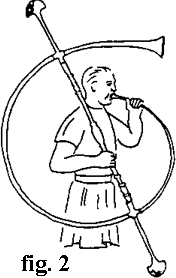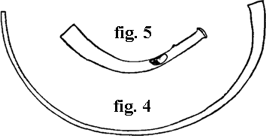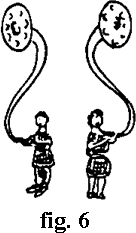 b Bronze Age Horn. Chute Hall, Ireland c Bronze Age Horn. Drumbest, Ireland d Celtic Horn. Ardbrin, Ireland e, f Bronze Age lurer, Brudevaelte, Denmark g,h Tutankamen's trumpets in bronze and silver |
 |
 b Bronze Age Horn. Chute Hall, Ireland c Bronze Age Horn. Drumbest, Ireland d Celtic Horn. Ardbrin, Ireland e, f Bronze Age lurer, Brudevaelte, Denmark g,h Tutankamen's trumpets in bronze and silver |
 |
 |
  |
 |
|